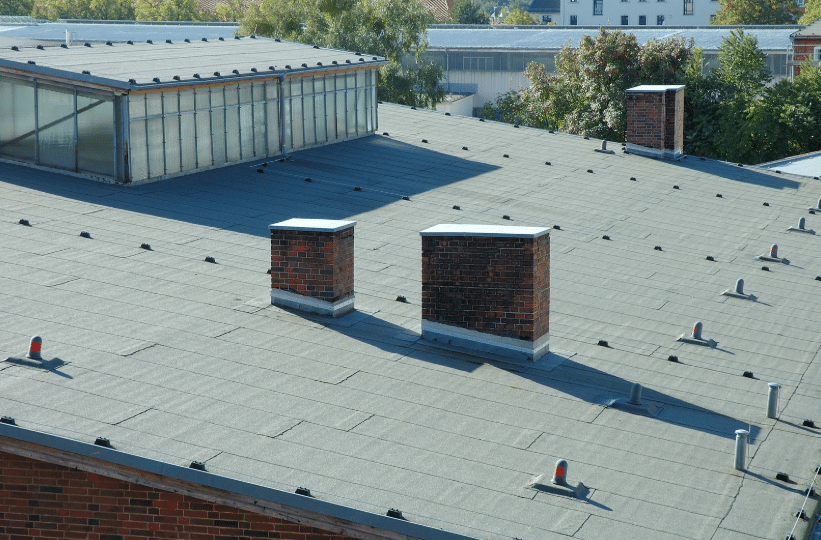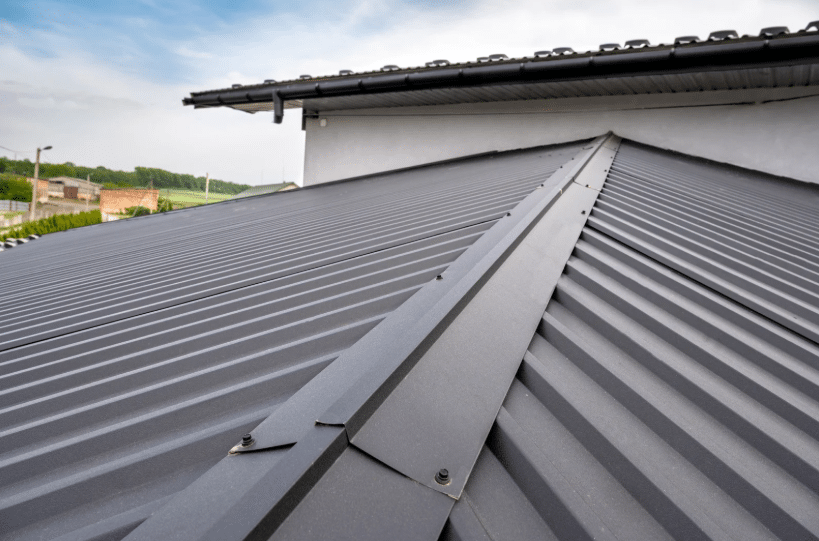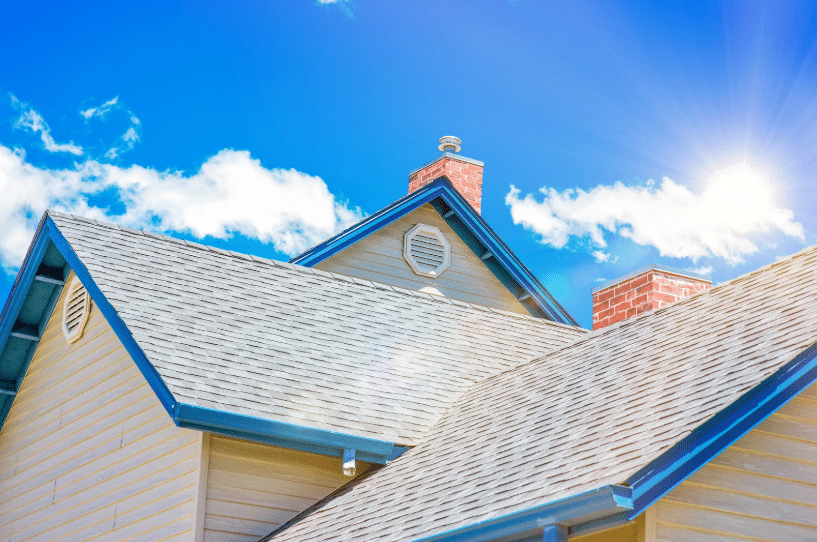08/14/2025
Energy-Efficient Roofing: Cool Roof Options and Benefits

Rising energy costs and increasing environmental awareness have homeowners searching for practical solutions to reduce their carbon footprint while lowering utility bills. Your roof, covering the largest surface area of your home, plays a crucial role in energy efficiency that many property owners overlook. Traditional dark-colored roofing materials can reach temperatures exceeding 150°F during summer months, forcing air conditioning systems to work overtime and driving up energy expenses significantly.
Energy-efficient roofing represents a strategic investment that delivers both immediate comfort improvements and long-term financial benefits. Cool roof technologies reflect more sunlight and absorb less heat than standard roofing materials, creating a measurable impact on indoor temperatures and energy consumption.
These innovative roofing solutions have gained substantial traction among environmentally conscious homeowners who want to reduce their environmental impact without sacrificing performance or durability.
This comprehensive guide explores the most effective cool roof options available today, examines their specific benefits, and provides practical insights to help you make an informed decision for your property. From reflective coatings to specialized shingle materials, we’ll cover the technologies that are transforming how homeowners approach energy efficiency through smart roofing choices.
Understanding Cool Roof Technology
Cool roof technology is based on two key principles: solar reflectance and thermal emittance. Solar reflectance measures how well a surface bounces solar energy away from the building, while thermal emittance measures how efficiently a material releases absorbed heat. Together, these properties determine how effectively a roof stays cool and reduces heat transfer into the home. Choosing the right materials can significantly lower cooling costs and improve indoor comfort.
Here are the essential elements to know about cool roof technology:
- Solar Reflectance: This measures how much solar energy a roof reflects instead of absorbing. High-reflectance materials can reflect up to 90% of solar radiation, compared to just 5–10% for traditional dark asphalt shingles.
- Thermal Emittance: This indicates how quickly a material releases absorbed heat. Materials with high thermal emittance stay cooler, helping to reduce indoor temperatures and energy usage.
- CRRC Testing Standards: The Cool Roof Rating Council provides standardized testing so homeowners can compare products accurately. These ratings offer trustworthy data to guide purchasing decisions.
- Long-Term Performance: Quality cool roof materials are designed to retain reflectance and emittance levels despite UV exposure, weathering, and general wear. This ensures consistent energy efficiency throughout the roof’s lifespan.
- Access to Advanced Materials: Working with Veteran Brothers Roofing & Restoration gives homeowners the latest cool roof options. These products combine cutting-edge design with proven performance for lasting savings and comfort.
By understanding how cool roofs work and what to look for in materials, homeowners can make informed choices that deliver both immediate and long-term benefits.
Reflective Shingle Options
Reflective shingles are the most popular cool roof choice for residential properties, offering traditional curb appeal with modern energy efficiency. They use specially designed granules that reflect solar radiation while maintaining the classic look many homeowners prefer. Leading brands like GAF, CertainTeed, and Owens Corning produce extensive Energy Star–certified lines to meet a variety of needs. This makes them an accessible option for those seeking to reduce cooling costs without major aesthetic changes.
Here are the key features and benefits of reflective shingle options:
- Energy-Efficient Design: Reflective shingles use granules coated with advanced ceramics to reflect solar radiation. This reduces heat absorption while preserving the familiar appearance of traditional asphalt shingles.
- Improved Solar Reflectance: These shingles typically achieve solar reflectance values between 25–40%, a notable improvement over standard dark shingles. Higher reflectance helps lower attic temperatures and overall cooling demands.
- Versatile Color Choices: Ceramic-coated granules allow for a range of colors without sacrificing reflectivity. Homeowners can match their desired style while still gaining energy efficiency benefits.
- Added Durability and Protection: Premium reflective shingles often include enhanced impact resistance and extended warranties. This combination is especially beneficial in regions prone to severe weather.
- Proven Energy Savings: A recent Arizona installation showed a 23% reduction in cooling costs after switching to reflective shingles. This demonstrates the measurable, real-world value of the technology.
By choosing reflective shingles, homeowners can achieve significant energy savings while keeping the visual character of their home intact.
Metal Roofing for Energy Efficiency

Metal roofing offers impressive energy efficiency thanks to its natural reflectivity and strong thermal performance. Materials like aluminum, steel, and copper can reach solar reflectance values above 70% when coated with specialized finishes. These roofs also release absorbed heat quickly in the evening, helping maintain cooler interior temperatures. With a lifespan of 40–70 years, metal roofing is a smart long-term choice for energy-focused homeowners.
Here are the main benefits and features of metal roofing for energy efficiency:
- High Solar Reflectance: Properly coated metal roofs reflect over 70% of solar radiation. This significantly reduces heat absorption compared to darker, non-reflective materials.
- Excellent Thermal Emittance: Metal surfaces release stored heat quickly during cooler evening hours. This helps lower nighttime cooling demands and maintains a more stable indoor temperature.
- Standing Seam Ventilation Benefits: The raised seams create natural ventilation channels beneath the roof. These channels promote airflow that removes heat buildup during hot days.
- Durable, Long-Term Investment: Metal roofing systems last 40–70 years, far exceeding traditional materials. This longevity combines with energy savings for exceptional lifetime value.
- Factory-Applied Cool Roof Coatings: These coatings resist fading, chalking, and weathering while maintaining reflectivity for decades. They outperform field-applied coatings in both durability and consistent energy performance.
Choosing a metal roof with advanced coatings can deliver decades of energy savings while protecting your home with unmatched durability.
Tile and Slate Solutions
Clay, concrete, and slate roofing materials offer both beauty and impressive energy efficiency. Clay and concrete tiles provide strong thermal mass properties that help regulate temperature changes, while light-colored options reflect substantial solar radiation. Modern manufacturing techniques add cool roof coatings to boost these natural advantages. Slate, with its dense composition and natural color variations, delivers similar benefits along with exceptional longevity.
Here are the main energy-efficient features of tile and slate roofing:
- Thermal Mass Benefits: Clay and concrete tiles absorb and slowly release heat, moderating temperature swings. This helps keep interiors cooler during the day and warmer at night.
- High Solar Reflectance in Light Colors: Light-colored tiles and slate reflect more sunlight, reducing heat gain. Cool roof coatings further improve reflectivity for better energy performance.
- Design Flexibility with Concrete Tiles: Modern concrete tiles come in a wide range of colors and profiles. Homeowners can achieve desired aesthetics without sacrificing efficiency.
- Ventilation from Installation Method: The way tiles are installed creates natural airflow beneath the surface. This ventilation helps reduce roof surface temperatures in hot weather.
- Longevity of Natural Slate: Slate roofing can last well over 100 years when properly maintained. Light-colored slate offers good reflectance while providing a premium, timeless appearance.
Tile and slate solutions combine architectural appeal with proven energy savings, making them ideal for homeowners who value both performance and long-term durability.
Coating and Membrane Systems
Cool roof coatings and membrane systems provide flexible, high-performance options for improving energy efficiency. Liquid-applied coatings can upgrade dark, heat-absorbing roofs into reflective surfaces without requiring full replacement.
Single-ply membranes like TPO and PVC offer commercial-grade performance for flat residential roofs, combining high solar reflectance with excellent durability. When professionally installed and maintained, these systems can significantly reduce cooling costs and extend roof life.
Here are the main features and benefits of coating and membrane systems:
- Versatile Liquid-Applied Coatings: Elastomeric, acrylic, and silicone coatings can be applied to various roofing materials. Each type offers unique advantages depending on the climate and existing roof conditions.
- Retrofit Energy Upgrades: Coatings can transform an existing dark roof into a highly reflective surface. This approach avoids full replacement while delivering immediate energy efficiency gains.
- High-Performance Membrane Systems: TPO and PVC membranes achieve over 75% solar reflectance. They provide strong weather resistance and are ideal for residential flat roofs.
- Importance of Professional Installation: Proper seaming, attachment, and surface preparation are critical for long-term performance. Cleaning, priming, and correct coating thickness ensure optimal energy results.
- Proven Energy Savings: A Texas homeowner saw a 31% drop in summer cooling costs after applying an elastomeric coating to an asphalt shingle roof. This showcases the measurable benefits of quality products and professional application.
Coating and membrane solutions give homeowners a cost-effective way to boost efficiency, protect their roof, and achieve noticeable energy savings.
Financial Benefits and Incentives

Energy-efficient roofing can provide significant financial returns through lower utility bills and various incentive programs. According to the Department of Energy, cool roofs can cut cooling energy use by 10–15% in most climates, with even greater savings in very hot regions. Over the roof’s lifespan, these annual savings often offset the higher upfront costs within 5–8 years. For many homeowners, this makes the investment both practical and cost-effective.
Here are the key financial benefits and incentives for energy-efficient roofing:
- Lower Utility Costs: Cool roofs reduce heat absorption, lowering indoor temperatures and decreasing the need for air conditioning. Savings can reach 10–15% annually, with higher reductions in hot climates.
- Federal Tax Credits: Homeowners may claim up to 30% of qualifying project costs for cool roof materials and installation. Products must meet certification and installation standards to be eligible.
- Utility Company Rebates: Many utility providers offer rebates for cool roof installations. These programs provide additional savings and help shorten the payback period.
- Increased Property Value: Energy-efficient features, including cool roofs, often raise resale value and reduce time on the market. Buyers are drawn to lower operating costs and modern, efficient upgrades.
- Accessible Financing Options: For those spreading costs over time, the guide “8 Roof Financing Programs” can make energy-efficient upgrades more attainable. Flexible payment plans help homeowners start saving on energy without large upfront expenses.
By combining direct energy savings with tax credits, rebates, and financing options, cool roofs deliver strong financial returns and long-term value for homeowners.
Installation Considerations and Best Practices
A successful cool roof installation depends on careful planning and attention to detail. Proper ventilation design is essential, as reduced heat gain can alter natural airflow patterns. Balancing intake and exhaust ventilation keeps the attic healthy while maximizing the roof’s energy efficiency. Choosing the right materials and techniques for your climate ensures long-term performance and consistent energy savings.
Here are the main considerations and best practices for installing cool roofs:
- Ensure Proper Ventilation Design: Balanced intake and exhaust systems prevent moisture buildup and maintain healthy attic conditions. Adjustments may be necessary to accommodate the reduced heat gain from a cool roof.
- Use Trained Installation Teams: Professionals experienced with cool roof technologies know how to preserve reflective properties during installation. Their expertise reduces the risk of contamination or damage.
- Follow Correct Handling and Storage Procedures: Cool roof materials must be stored and handled carefully to avoid surface damage. Even small imperfections can lower solar reflectance and reduce efficiency.
- Implement Quality Control Measures: Verify that materials meet specified reflectance values and installation standards before project completion. This ensures the roof performs as intended for its full lifespan.
- Consider Climate-Specific Factors: In colder regions, balance cooling benefits against possible winter heating penalties. Professional assessment of local climate, building orientation, and energy patterns ensures the best net energy outcome.
By following these best practices, homeowners can ensure their cool roof delivers maximum energy performance, durability, and year-round comfort.
Environmental Impact and Sustainability
Cool roofs play a major role in environmental sustainability, offering benefits that extend beyond lowering household energy bills. They help combat the urban heat island effect, where cities remain hotter than nearby rural areas.
Research shows that when cool roofs are widely adopted across neighborhoods, they can reduce urban air temperatures by 2–5°F. These systems also promote better air quality and community climate resilience.
Here are the main environmental benefits and sustainability features of cool roofs:
- Urban Heat Island Reduction: Widespread cool roof use can lower neighborhood temperatures by several degrees. This improves comfort for residents and reduces strain on local power grids during heat waves.
- Lower Greenhouse Gas Emissions: By reducing energy demand for cooling, cool roofs cut emissions from power generation. The EPA estimates large-scale adoption could eliminate 24 million tons of CO2 annually.
- Recycled Content in Materials: Many cool roof products, including metal systems, contain 25–95% recycled content. This supports resource conservation and lowers the environmental footprint of production.
- Recyclability at End-of-Life: Several cool roof materials can be recycled after their service life. This reduces landfill waste and supports circular economy goals.
- Environmentally Conscious Shingle Selection: Choosing appropriate shingle types with recycled content aligns roofing investments with sustainability objectives. Some reflective shingles incorporate recycled materials without sacrificing performance.
By selecting eco-friendly roofing options, homeowners can save energy, reduce emissions, and contribute to healthier, more resilient communities.
Frequently Asked Questions
How much can I expect to save on energy costs with a cool roof?
Energy savings from cool roofs typically range from 10-30% of cooling costs, depending on your climate, existing roof condition, and chosen materials. Homes in hot climates like Arizona, Texas, and Florida generally see the largest savings, while moderate climates may experience smaller but still meaningful reductions. The exact savings depend on factors like home insulation, HVAC efficiency, and local energy rates.
Do cool roofs work effectively in all climates?
Cool roofs provide the greatest benefits in hot, sunny climates where cooling costs dominate energy expenses. However, they can offer advantages in most U.S. climates except those with minimal cooling needs and high heating requirements. Modern cool roof materials are designed to minimize any winter heating penalties while maximizing summer cooling benefits.
Will cool roof materials cost significantly more than traditional options?
Initial costs for cool roof materials typically run 10-50% higher than standard alternatives, depending on the specific product and technology. However, energy savings, available incentives, and longer lifespans often offset higher upfront costs. Metal cool roofs and premium reflective shingles command higher prices, while cool roof coatings offer more affordable retrofit options.
How long do cool roof materials maintain their reflective properties?
Quality cool roof materials are designed to retain their energy-efficient properties throughout their expected lifespan. Reflective shingles typically maintain effectiveness for 15-30 years, while metal roofs with quality coatings can perform optimally for 30-50 years. Regular maintenance and cleaning help preserve reflective properties over time.
Can I apply cool roof coatings to my existing roof?
Many existing roofs can be retrofitted with cool roof coatings, providing an affordable path to energy efficiency improvements. However, the existing roof must be in good structural condition, and proper surface preparation is essential for optimal results.
Professional assessment determines whether your current roof is suitable for coating application and helps select the appropriate coating system for your specific situation.
Upgrade to Energy-Efficient Roofing and Start Saving Today!

Energy-efficient roofing represents a smart investment that delivers immediate comfort improvements while providing long-term financial and environmental benefits. Cool roof technologies have evolved to offer homeowners diverse options that suit various budgets, aesthetic preferences, and climate conditions without sacrificing performance or durability. From reflective shingles to advanced coating systems, these solutions can significantly reduce energy consumption while enhancing property values.
The combination of federal tax credits, utility rebates, and ongoing energy savings makes cool roof installation financially attractive for most homeowners. Take action today by consulting with roofing professionals who can assess your specific needs and recommend the most effective cool roof solution for your property and climate conditions.
About Veteran Brothers Roofing & Restoration
Veteran Brothers Roofing & Restoration specializes in energy-efficient roofing solutions with over a decade of experience serving homeowners who want to reduce energy costs while improving property values. We provide comprehensive cool roof services including reflective shingle installation, metal roofing systems, and cool roof coating applications. Our team of certified roofing professionals combines technical expertise with deep knowledge of energy-efficient technologies to deliver measurable results for our clients.
We pride ourselves on staying current with the latest cool roof innovations and Energy Star certified products that provide optimal performance in various climate conditions. Our installation teams are trained in proper cool roof techniques that maximize energy efficiency while ensuring long-term durability and warranty compliance. We have helped hundreds of homeowners achieve significant energy savings through strategic cool roof installations and upgrades.
Contact Veteran Brothers Roofing & Restoration today at (817) 875-9834 to discuss how our energy-efficient roofing expertise can help you reduce cooling costs and improve home comfort. Schedule a consultation to learn more about our cool roof solutions and how we’ve helped clients achieve average energy savings of 15-25% through professional cool roof installations.
INCOMING MESSAGE
It’s storm season. If you think there’s been storm damage to your roof, or would simply like the peace of mind of knowing you’re in the clear, Veteran Brothers is here to help.

